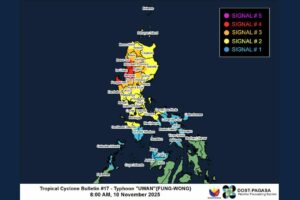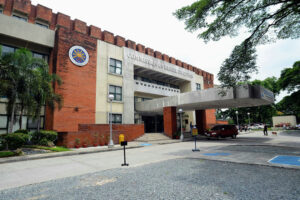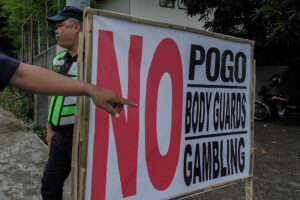Dr. Patrick Moynihan, an American politician, diplomat and social scientist was known for coining the phrase, “Benign Neglect.” By that he meant that for certain public policy issues, the best policy is to do nothing and let matters take their course. This policy came to mind when the newly appointed Commission on Higher Education (CHED) Chairperson Shirley C. Agrupis described the state of Philippine higher education as having “sunk to its lowest point.”
To be more accurate, the CHED Chairperson’s description applies only to CHED and not the institutions of higher education under its authority. The institutions of higher education — such as private colleges both secular and religious, as well as the public colleges both the State Universities and Colleges (SUCs) and the Local Universities and Colleges (LUCs) or pamantasans — are doing just fine.
As background, while the Department of Education (DepEd) is responsible for basic education, CHED is responsible for higher education. Both exercise regulatory powers, DepEd over the private grade schools and high schools and CHED over the private colleges as well as the pamantasans. Both exercise supervisory powers, DepEd over the public basic education schools and CHED over the SUCs.
However the nature of their supervisory powers is quite different. DepEd directly operates the public schools while the CHED indirectly operates the SUCs through their membership in the boards of trustees of the SUCs.
This difference is reflected in their organizational structures. DepEd is the largest department in government, headed by a Cabinet Secretary who is the sole top executive similar to the CEO of a private corporation. CHED is a government agency attached to the Office of the President and is run by a Commission of five members of which one is the Chairman, similar to the chairman of the board of a private corporation.
These differences are reflected in the size of their organization. DepEd has around a million employees of which around 200,000 are administrators; CHED has only around 700 employees. The 2025 budget of the DepEd is P737 billion while that of CHED is P31 billion. For context, while there are around 28 million students in basic public education, there are about 3.4 million students in higher public education.
Furthermore, while 88% of students in basic education study in public schools, only 41% of students in higher education study in SUCs.
To conclude, in sharp contrast to DepEd with respect to basic education, CHED with respect to higher education can do little harm. We argue that this inability to intervene comprehensively has resulted in the healthy condition of the private colleges and the pamantasans.
PHINMA AND EDUCATIONIn 2004, after divesting its investment in the cement business, Philippine Investment Management (PHINMA), a Filipino conglomerate controlled by the Del Rosario family, pivoted to the business of education by acquiring control of Araullo University.
Prior the 1990s, most of the private schools were run by educators such as the Laurels (Lyceum), the Fabellas (Jose Rizal University) and the Reyeses (Far Eastern University or FEU) rather than businessmen.
After this, business groups such as the Henry Sy Group (National University), the Ayala Group (National Teachers College), the Alfonso Yuchengco Group (Mapúa University), the Lucio Tan Group (University of the East or UE), the George Ty Group (Tytana Colleges) Group, and the Emilio Yap Group (Centro Escolar) began investing in education.
However, unlike these business groups, the PHINMA Group, as articulated by its Chairman Ramon R. del Rosario, was the first to formally declare that there are business opportunities in education. Moreover, in sharp contrast to those who saw business opportunities only by offering high quality education to the rich or by offering low quality education to the poor, Del Rosario saw opportunities in providing quality education to underserved youth who are often the first in their families to go to college.
Through a “bare bones, no frills, brass knuckles” strategy, Phinma was able to keep tuition fees low and affordable and focus on developing and innovating the most important elements for learning: proper classrooms and facilities, learning techniques and materials, and a great faculty. Phinma does not drive their faculty to publish; instead, they demand they teach well.
From the acquisition of Araullo University in 2004 with its 5,000 students, there are now 11 Phinma schools in the Philippines with around 163,000 students in 2025. Under the leadership of Mr. Del Rosario and President Chito B. Salazar, Phinma, by doing good, has done exceedingly well. In 2024, Phinma Education contributed P1.5 billion in profits to the Phinma Group.
CHANGING COLONIZERSUpon the conclusion of the Spanish-American war, Spain ceded the Philippines to the United States of America. This change in colonial master had two significant consequences for Philippine education. For one, the Americans declared a policy of separation of church and state. This meant that religion could no longer be taught in public schools.
In response, the Catholic Church in the Philippines followed the example of the Catholic Church in America. Parish schools were organized, existing religious schools such as the University of Santo Tomas (UST) were expanded, and external religious orders were invited to set up schools in the Philippines. At the invitation of Manila Archbishop Jeremiah James Harty, the Christian Brothers founded De La Salle University in 1911.
This approach to setting up a religious school system in parallel to the public school system has evolved into a network of 2,300 schools with estimated enrollment of 1.8 million students. The oldest and the largest Catholic school is UST with an enrollment of around 40,000 students.
Founded in 1611 by the Dominicans (Order of Preachers), UST has expanded geographically from its initial campus in the Sampaloc district of Manila to Quezon City (UST Angelicum College), Santa Rosa, Laguna (UST-Santa Rita), Legazpi City (UST-Legazpi), and General Santos (UST-General Santos). UST-General Santos, which opened in 2024, is an 80-hectare campus in southern Philippines that offers programs in agricultural and fishery research, arts and humanities, business and accountancy, engineering and technology, and pharmaceutical sciences.
The second significant consequence of the change from a Catholic Spain to a Protestant American was the arrival of Protestant missionaries following in the footstep of their American warriors.
In 1901, Silliman University was established in Dumaguete City, the first Protestant school in the Philippines and in Asia. From this initial foothold, the number of Christian schools in the Philippines has expanded to six universities, three seminaries, 40 colleges, and 69 basic education schools.
PAMANTASANS
In 1967, the Pamantasan ng Lungsod ng Maynila (University of the City of Manila) started operation. This pamantasan was the first chartered and autonomous university funded by a city government. The pamantasan was established based on the belief there was a need for a school of higher learning specifically run to meet the needs of the citizens of Manila, something that the national government schools of higher education had failed to do. (See our column, “Motherhood and Mission Statements,” BusinessWorld, June 17, 2024).
These sentiments were shared by other local government units such that we now have 121 pamantasans. Moreover the LUCs have been growing faster than the SUCs. EdCom II reports that for AY 2011-2012 to AY 2019-2020, enrollment growth for LUCs was 168% compared to 73% for SUCs.
We once asked fellow AIM professor and University of Makati (UMak) President Tomas Lopez the secret to the success of UMak. His response, “We declared independence from CHED.” Thus, when UMak launched their Dualized University Education System (DUES), an academic partnership between UMak and the Makati businesses, they did not seek the approval of CHED, correctly judging that the value of a degree is not determined by the imprimatur of CHED but rather the employment opportunities that are opened to the graduates.
The declaration of financial independence was relatively easy; UMak merely had to refuse the trifling financial grants offered by CHED under the Unifast Law. This act of successful rebellion has not gone unnoticed by the other pamantasans.
CHOICE AND NO CHOICEOne final point is the difference in choices poor students are faced regarding basic public education and public higher education in the Philippines.
Unlike in most countries where the administration of basic education is lodged in the local government units, in the Philippines, it is lodged in a highly centralized national government agency. For example, in the United States public schools in basic education are run by the local school boards, assuring diversity in curriculum, teaching methods and materials, and teacher training. Thus, many American parents would first choose the public school where they prefer their children to study and then search for a home in that district. In contrast, Filipino parents do not have that choice when it comes to our public elementary and high schools. From any public school under the monolithic Department of Education, they are confronted with the same curriculum, the same textbooks, and the same trained teachers. No student in our DepEd schools will ever experience the Montessori method of learning.
By contrast, in higher education, students can choose among the various types of SUCs ranging from the University of the Philippines to the Technological University of the Philippines. They have the additional choice of going to the pamantasan in their city. Since both SUCs and LUCs are free, the basis of competition is quality of education and not free tuition. Not so in basic education where students have no choice unless given vouchers since only public schools are free.
To conclude, considering that the forces of reform and progress as cited above that have already been unleashed in higher education, there is no need for government to intervene. With no need to intervene, there is no need to revitalize the CHED. With respect to CHED, we merely need to adopt a policy of benign neglect.
How we wish we could adopt the policy of benign neglect with respect to our other national government agencies!
Dr. Victor S. Limlingan is a retired professor of AIM and a fellow of the Foundation for Economic Freedom. He is presently chairman of Cristina Research Foundation, a public policy adviser and Regina Capital Development Corp., a member of the Philippine Stock Exchange.


















